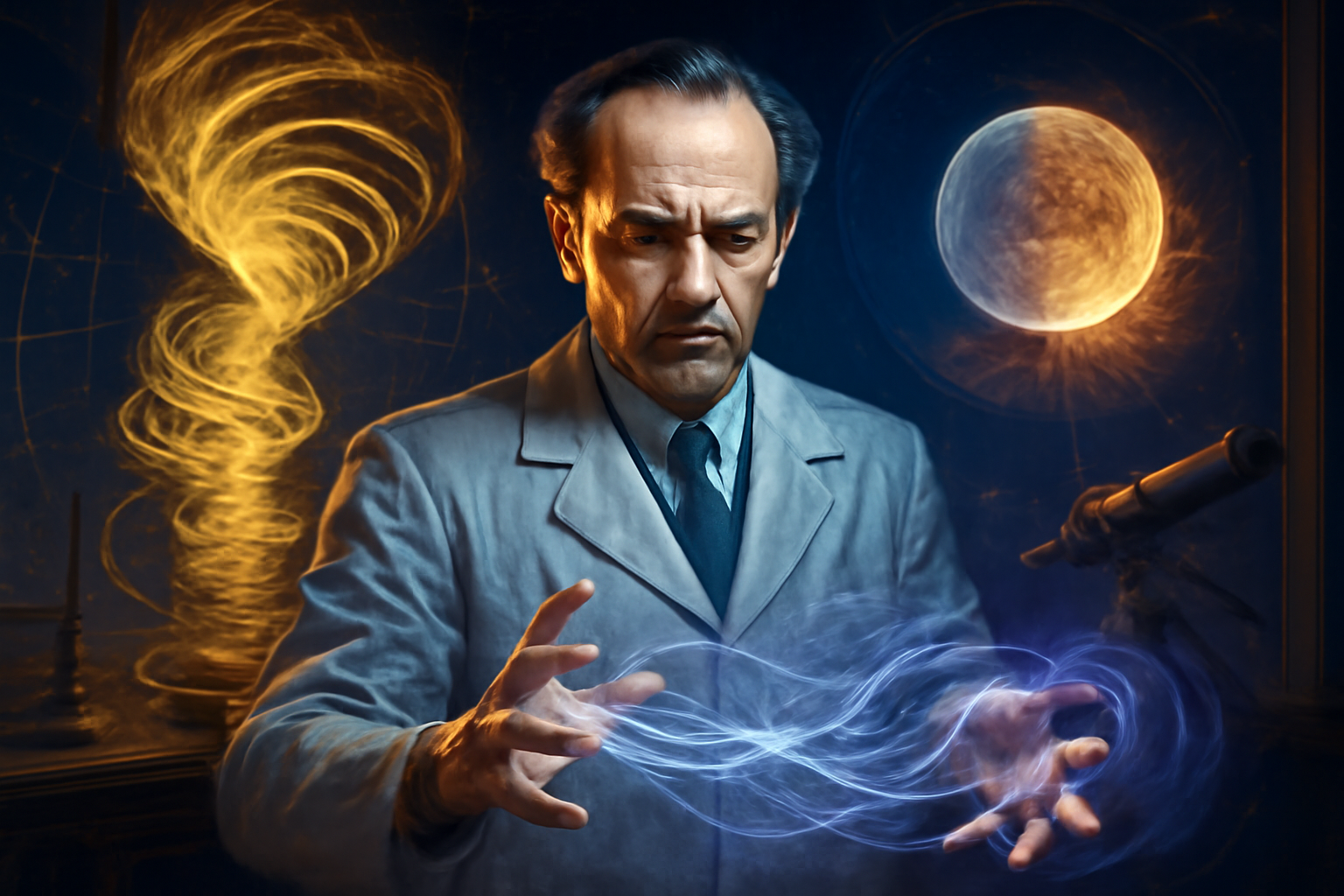Title: Nikolai Aleksandrovich Kozyrev
Description: Explore the life and groundbreaking theories of Nikolai Kozyrev, the Soviet astrophysicist who challenged conventional physics with his ideas on time as an active force, torsion fields, and celestial energy. Discover his controversial legacy in science.
Author: Alloya Huckfield
tags:
- Nikolai-Kozyrev
- torsion-fields
- Soviet-astrophysics
icon: LiAsterisknikolai-kozyrev

Nikolai Aleksandrovich Kozyrev (1908–1983) was a Soviet astrophysicist and philosopher of science whose work ventured into controversial and unconventional areas of physics, including time, torsion fields, and the energy of celestial bodies. Despite facing scepticism from mainstream science, his theories continue to inspire alternative research in physics and cosmology.
Kozyrev was born on September 2, 1908, in St. Petersburg, Russia. He studied physics and mathematics at Leningrad State University and later worked at the Pulkovo Observatory. His early research focused on stellar physics, particularly the physics of the Sun and other stars.
However, his career was abruptly interrupted in 1936 when he was arrested during Stalin's purges and sentenced to ten years in labor camps. Despite the harsh conditions, he continued his scientific work in secret. After his release in 1948, he returned to academia, working at the Crimean Astrophysical Observatory and later at the Pulkovo Observatory.
Kozyrev is best known for his radical ideas, which challenged conventional physics:
-
Causal Mechanics (Time as an Active Force)
- Kozyrev proposed that time is not just a dimension but an active physical force that can transmit energy and influence matter.
- He suggested that time has a "density" and "flow", and that certain astronomical phenomena (like star formation) could be influenced by temporal energy.
- His experiments allegedly detected minute forces generated by non-equilibrium processes (e.g., sudden temperature changes or mechanical actions), which he attributed to time’s causal effects.
-
Torsion Fields and Instantaneous Interactions
- Kozyrev speculated about torsion fields—hypothetical energy fields related to the rotation of matter—that could allow for faster-than-light information transfer.
- Some later researchers (like Russian scientist Anatoly Akimov) expanded on these ideas, though they remain unproven in mainstream physics.
-
Lunar and Planetary Anomalies
- He claimed that the Moon and other celestial bodies exhibit unusual energy emissions, which he linked to his time-energy theories.
- Some of his observations suggested that certain lunar craters emitted unexpected heat, possibly due to internal processes related to his causal mechanics.
Kozyrev’s work was largely dismissed by mainstream Soviet and Western scientists, who viewed his experiments as lacking rigorous reproducibility. However, his ideas gained a cult following among alternative researchers, particularly in Russia, where some continue to explore torsion fields and "time energy."
Despite the controversy, Kozyrev remains a fascinating figure in the history of science—a bold thinker who dared to challenge established paradigms. His work sits at the intersection of hard science and speculative physics, leaving a legacy that continues to provoke debate.